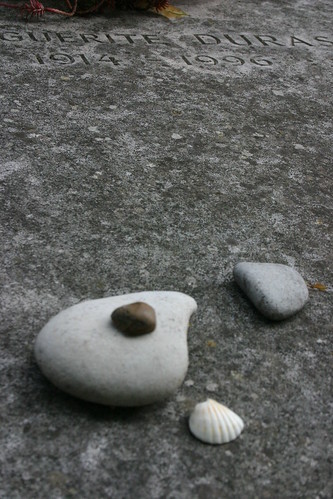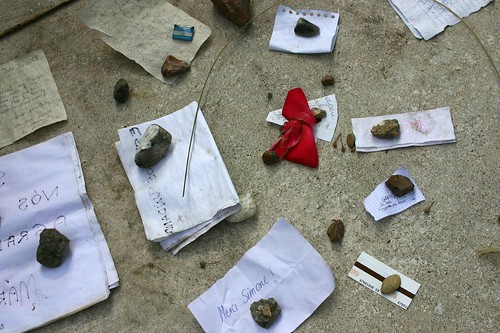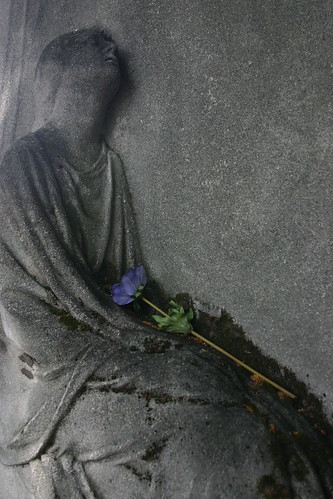"Montparnasse" ---- the name is said to be derived from the ancient Greek "Mount Parnassus", the home of Apollo, the god of poetry, music and beauty. ---- has been a Mecca for Parisian artists and intellectuals. And Montparnasse cemetery, is the final resting place of many those celebrated intellectuals.
It was Sunday morning. I came to the entrance of the cemetery, without knowing much backdrop. There is no omen signaling a trip any different from cemetery tours in New Orleans. When opening the cemetery guide map however, I surprisingly found many readable names. Some of the notable burials here include: Charles Baudelaire(French poet), Camille Saint-Saens (French composer), Samuel Beckett (Irish writer), Marguerite Duras (French writer and film director), Heinrich Heine (German poet), Jean-Paul Sartre (French philosopher and novelist) and Simone de Beauvoir (French philosopher).
Many years ago I bumped into the book in a tiny bookstore, the Flowers of Evil (恶之花) by Charles Baudelaire, the beginning of the name Baudelaire came to my mind. When studying in Chicago, I was further influenced by my roommate Xin, who majors in French literature and one of her favorite poets is Baudelaire. I still remember the postcard on her bookshelf, a handsome young man with mysteriously penetrating eyes, who is Baudelaire.
As for Heinrich Heine, I just visited the world's unique Heinrich Heine Institute in his hometown Dusseldorf, two weeks before visiting Montparnasse cemetery. The memory was still fresh, for his talented works and those lyric poetry set into music by Schumann, Mendelssohn, and Brahms. Now I saw his grave, the forever peace place he would rest.
"It was the men I deceived the most that I loved the most." -- Marguerite DurasMany people got to know Duras from the movie "The Lover". It was adapted from her semi-autobiographical novel L'Amant. At the time as I was watching this movie, I was too naive to understant those feelings. But I still clearly remembered the ending. In time, she is not sure that she didn’t love him, when she hears a waltz by Chopin on the ship as she crosses the Indian Ocean. It is only then that we see any real emotion – real sobbing, real tears. He will call her years later when he is in Paris and she is a famous writer. Duras writes, His voice trembling, he tells her that it is as before. That he never stopped loving her. Would never stop. That it would be that way until his death.
"In love there are no vacations … No such thing. Love has to be lived fully with its boredom and all that." -- Marguerite Douras
(Marguerite Duras, 1914 -1996)
Jean-Paul Sartre (1905-1980) and Simone de Beauvoir (1908-1986), two of the most influential and controversial writers and thinkers of the 20th centruy. You may hear about that Sartre declined the Nobel Prize in Literature. You may read the famous book, The Second Sex by Beauvoir. You may even know that this "couple" shared independent life, who met in cafés, where they wrote their books and saw their friends at separate tables, and were free to enjoy other relationships, but who maintained a kind of soul marriage.
But have you heard about anecdotes that they were ever acting out a version of "Dangerous Liaisons”? Was Simone really happy for such a unique relationship with Sartre? In her final words on Sartre's death (and her own, in Adieux), Simone wrote:
"My death will not bring us together again. This is how things are. It is in itself splendid that we were able to live our lives in harmony for so long."
"One is not born, but rather becomes, a woman." - Simone de Beauvoir








No comments:
Post a Comment